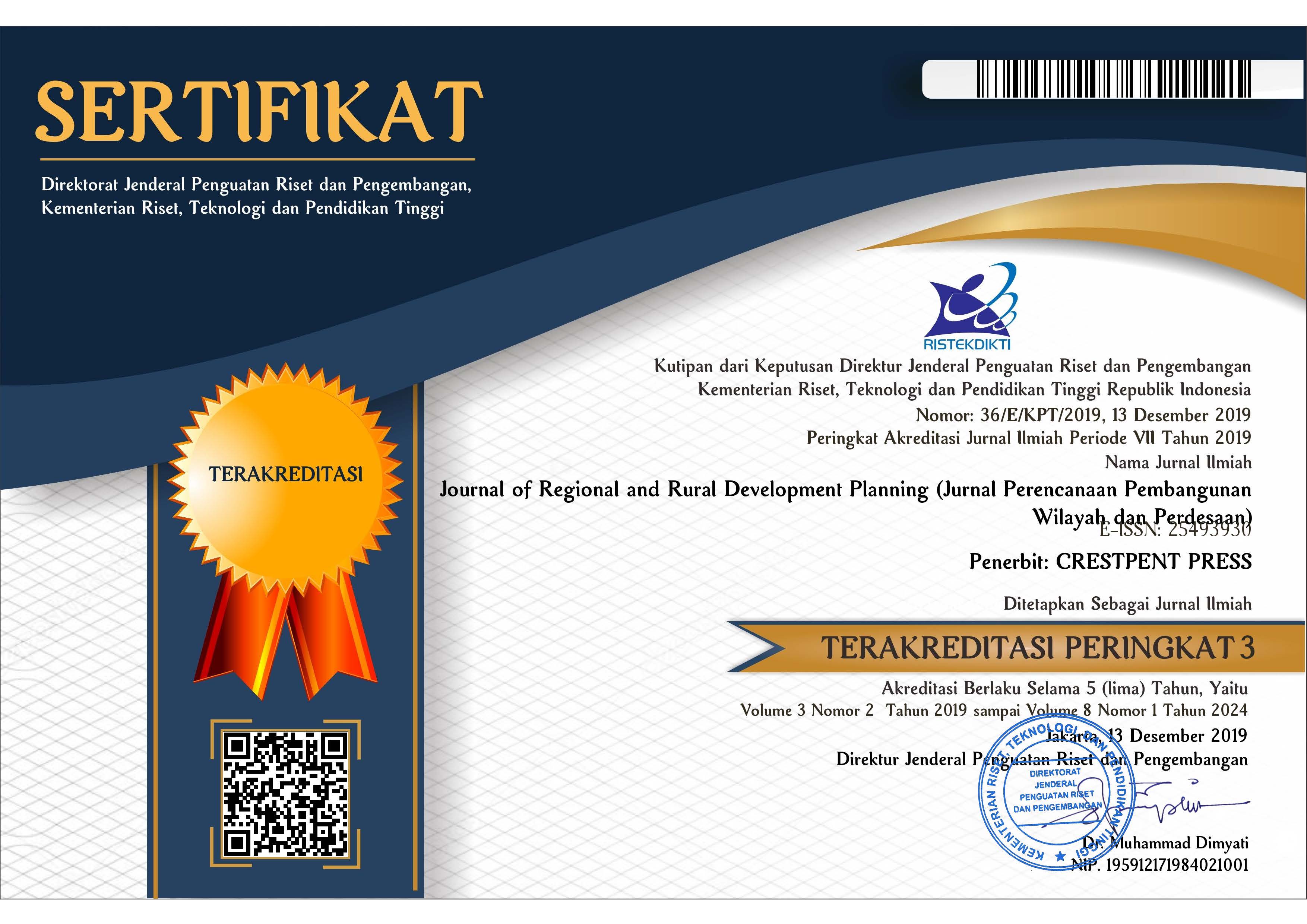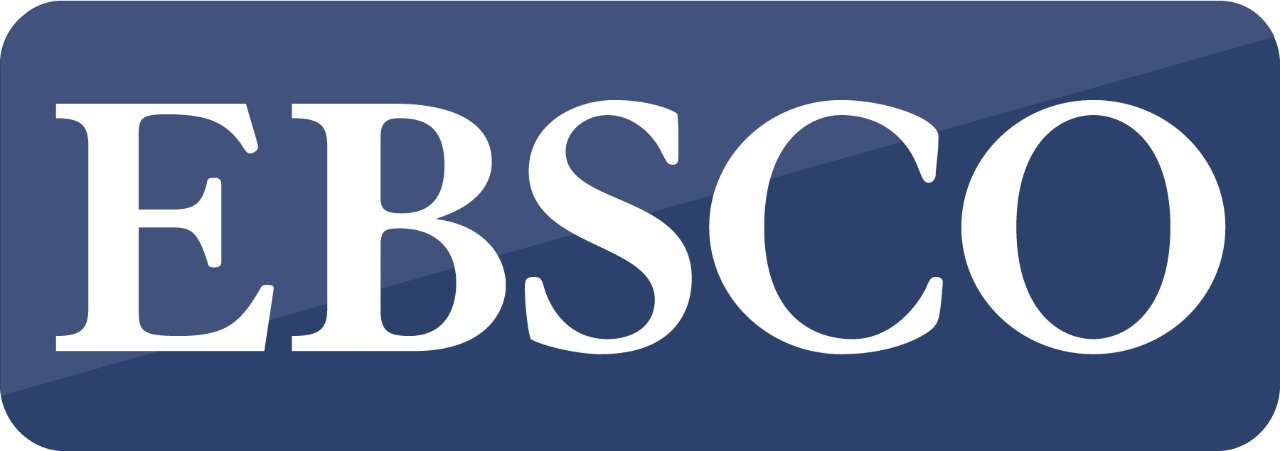Peran Stakeholder dalam Pengelolaan Kawasan Taman Wisata Alam Kawah Ijen
Abstract
Ijen Crater Nature Park (TWAKI) is one of East Java Province's tourism destinations designated as a national tourism strategic area (KSPN). The natural beauty and the phenomenon of blue fire from the Ijen crater are an attraction for local and foreign tourists to visit the area. Also, an area that is prone to volcanic eruptions and fires. Administratively, Ijen is located in two districts, namely Banyuwangi and Bondowoso. The management of the area is carried out by the East Java Natural Resources Conservation Center (BBKSDA). Ijen borders the forest area managed by KPH Bondowoso and KPH Banyuwangi Barat. This potential area is also an attraction for stakeholders to be involved in developing Ijen Crater's natural tourism by their respective authorities. This study identifies the stakeholders' role in developing the TWAKI. The method used is an exploratory case study with pattern-matching analysis techniques. The study's results, namely the stakeholders' role in managing Ijen crater natural tourism, are divided into four categories: policy creators, implementers, facilitators, and conservators.
References
Banyuwangi, T. T. I. G. K. (2022). Ijen Geopark Map (1st ed.).
Bryson, J. M. (2003). What To Do When Stakeholders Matter: A Guide to Stakeholder Identification and Analysis Techniques (Issue February).
Creswell, J. W. (2013). Qualitative Inquiry & Research Design (L. Habib (ed.); 3rd ed.). SAGE Publications Ltd.
Fitroh, S. K. A., Hamid, D., & Hakim, L. (2017). Pengaruh Atraksi Wisata Dan Motivasi Wisatawan Terhadap Keputusan Berkunjung (Survei pada Pengunjung Wisata Alam Kawah Ijen). Jurnal Administrasi Bisnis (JAB)|Vol., 42(2), 18–25.
Freeman, R. E. (1984). Strategic Management : A Stakeholder Approach. In E. M. Epstein (Ed.), Pitman Series in Business and Public Policy. Pitman Publishing Inc. https://doi.org/10.4324/9780203982211-18
Freeman, R. E. (2015). Stakeholder Theory. In Wiley Encyclopedia of Management(Business E, pp. 1–6). Wiley & Sons. https://doi.org/10.1002/9781118785317.weom020179
Guo, R. (2005). Cross-Border Resource Management : Theory and Practice. In S. V. Krupa (Ed.), Cross-Border Resource Management (1st ed.). ELSEVIER B.V. https://doi.org/10.1016/b978-0-444-64002-4.00005-2
Hermawan, W. F. (2021). Pengembangan Ekonomi Lokal Berbasis Kegiatan Pariwisata Ijen Geopark (Studi Kasus: Taman Wisata Alam Kawah ijen Kecamatan Licin Kabupaten Banyuwangi). Universitas Jember.
Kuhaja, T. (2014). Kajian Kelembagaan dalam Pengembangan Pariwisata Pantai yang Berkelanjutan. Pembangunan Wilayah & Kota, 10(September), 278–292. https://doi.org/https://doi.org/10.14710/pwk.v10i3.7785
Mustafa, F., & Marsoyo, A. (2020). Tipologi Peran Stakeholder dalam Mendukung Reforestasi di Daerah Istimewa Yogyakarta. Jurnal Planoearth, 5(1), 35. https://doi.org/10.31764/jpe.v5i1.1653
Nugroho, H.N. Zauhar, S., & Suaryadi. (2014). Koordinasi Pelaksanaan Program Pengembangan Kawasan Agropolitan di Kabupaten Nganjuk. Jurnal Pembangunan Dan Alam Lestari., 5(1), 12–22. https://jpal.ub.ac.id/index.php/jpal/article/view/147
Ramadhani, C. (2019). Keanekaragaman Mamalia Kecil Terestrial Di Cagar Alam Kawah Ijen, Kabupaten Banyuwangi, Jawa Timur. Zoo Indonesia, 28(2), 112–121. https://doi.org/10.52508/zi.v28i2.4100
Reed, M. S., Graves, A., Dandy, N., Posthumus, H., Hubacek, K., Morris, J., Prell, C., Quinn, C. H., & Stringer, L. C. (2009). Who’s in and why? A typology of stakeholder analysis methods for natural resource management. Journal of Environmental Management, 90(5), 1933–1949. https://doi.org/10.1016/j.jenvman.2009.01.001
Sugiyono. (2013). Metode Penelitian Kuantitatif, Kualitatif, dan R&D (19th ed.). Alfabeta Bandung.
Virgiawan, D. B. (2020). ANCAMAN ERUPSI KAWAH IJEN TERHADAP MASYARAKAT LERENG IJEN ( Kabupaten Bondowoso ). Journal of Social Science and Education, 1(1).
Wardana, D. T. (2018). PERLINDUNGAN SOSIAL PENAMBANG BELERANG DI PT CANDI NGRIMBI DI KAWAH IJEN BANYUWANGI [Universitas Muhammadiyah Malang]. http://eprints.umm.ac.id/id/eprint/43524
Yin, R. K. (2009a). Case Study Research: Design and Methods (4th ed.). SAGE Publications, Inc.
Yin, R. K. (2009b). Studi Kasus : Desain & Metode (M. D. Mudzakir (ed.)). Rajagrafindo Persada.
Zaelani, A. R. (2017). Analisa Konstruksi dan Sarana Penunjang Jalan pada Badan Jalan Raya Kawah Ijen KM.27 – KM.29 Kabupaten Bondowoso [Universitas Muhammadiyah Jember]. http://repository.unmuhjember.ac.id/id/eprint/10945
Copyright (c) 2023 Journal of Regional and Rural Development Planning (Jurnal Perencanaan Pembangunan Wilayah dan Perdesaan)

This work is licensed under a Creative Commons Attribution-ShareAlike 4.0 International License.




.png)














